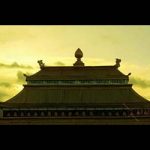Ladakh… rugged… picturesque… and steeped in antiquity. The name Ladakh is a Persian variation of the Tibetan name – La-dvags – which means “the Land of High Passes”. Ladakh is a melting pot of ancient peoples, cultures and customs. These are people of Indo-Aryan and Tibetan descent… hardy people… active and cheerful, with a simple way of life. Stone Curving and Weaving of Ladakh are dying art of Ladakh.
The Ladakhis were ancient hunters and gatherers. Even today agriculture along the Indus River is the main source of livelihood. The area is home to some ancient and rapidly vanishing traditional Ladakhi art forms and handicrafts.
An ancient textile weaving system that uses crude handmade tools and implements that have remained unchanged across centuries. Yak hair, goat hair and sheep wool are woven into clothes, shawls, rugs, carpets, mats, etc. The most popular clothing item is the traditional Ladakhi Goncha – a long calf-length gown worn with a belt around the waist.
Stone carving is an art form found in almost all parts of India… but in Ladakh, it is truly unique. You can see them all across Ladakh, along highways and roads… in remote mountains… along the river banks. They are called “Mani Stones”. The name is derived from the fact that these stones are engraved with the six-syllable mantra of Avalokiteshvara: Om Mani Padme Hum… the Jewel in the Heart of the Lotus…
These stones are often arranged to form walls along roadsides… these are called “Mani Walls”… and they seem to stretch all the way to eternity… wafting the mantra across the mystical Ladakhi landscape. Sadly, this is a dying art form. In fact, Ugain Rigzen is the last living practitioner of this unique craft (in Gya village)



